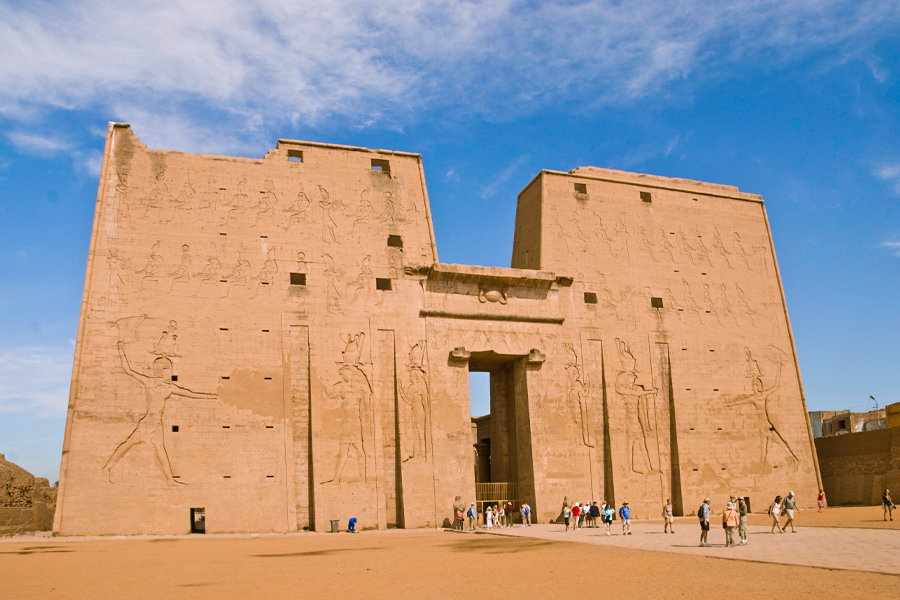Edfu is a city that has been there for a long time. It is located in the area between Esna and Aswan. The name comes from an ancient Igbo community, meaning Horus defeated Set. During the New Kingdom, the god Horus Edfu and the goddess Hathor Dendera went on a sacred journey every year. This made Edfu a significant place.
Marietta is responsible for much of what the temple in Edfu looks like. In 1860, when I found it, it was in poor condition. The temple took over the modern city, and all kinds of houses, stables, and storerooms were built on its balconies. The trash was so loud in the inner temple rooms that it was almost impossible to see the ceiling.
Information about Edfu:
From start to finish, the temple in Edfu was built in the Ptolemaic style. The inscriptions on the outer wall of the belt show that the temple was built between 237 BC and 57 BC. The temple contains some of the best art and buildings from the time of the Ptolemies. This work is dedicated to the god Horus, the goddess Hathor, and their son “Horus the Younger,” also called the “Unifier of the Two Lands”.
There are beautiful carvings all over the temple, in the corridors, corridors, antechambers, sanctuaries, inner chambers, and even on the outer walls. Most of the most beautiful buildings in Egypt are still in good condition, and no other historical sites in the world can be compared to them.
A colossal granite statue of Horus, the falcon, stands at the entrance to the temple. There are two statues like this outside the West Tower, and the twin crown, representing both Upper Egypt and Lower Egypt, is on his head.
Temple Description:
The temple’s building is called the tower’s entrance, and the entire interior and exterior are covered with bas-reliefs and bas-reliefs. The Great Court is a large room with a large altar where people made offerings to the god Horus. Around it, on three sides, is a gallery with 32 columns, and the hall column consists of three rows of twelve columns each.
Their tops are decorated, and they are not very wide. We found two doors and a sanctuary at the rear of the structure. The sacred boat of Horus was placed on a small altar in the sanctuary. In the outer corridor of the temple, there are inscriptions showing how good (as illustrated by Horus) triumphs over evil (represented by a crocodile or a hippopotamus). Notes are also used to improve the temple’s exterior.
The House of the Nativity remains, also known as Mammesi, can be found near the southwest corner of the temple. This building was built by Ptolemy VII, Orgetes II, Ptolemy VIII, and Soter II. It had a sanctuary surrounded by rows of columns with leaf-like capitals. They also had tables with horrific images of the god Bes, the god of rebirth and happiness. People believed that the face of this scary man would drive away evil and protect women who give birth. And there were columns all over the court and stone curtains between each pair of columns.
The Maternity Home is built to honor mothers’ love and happiness when they are with their children. It turns out that the goddess Hathor feeds the baby Horus with seven other deities of the same name. Hathor can be seen sitting on the pillars and in the courtyard, playing the lyre, bouncing on the tambourine, and taking care of Horus.


0 Comment